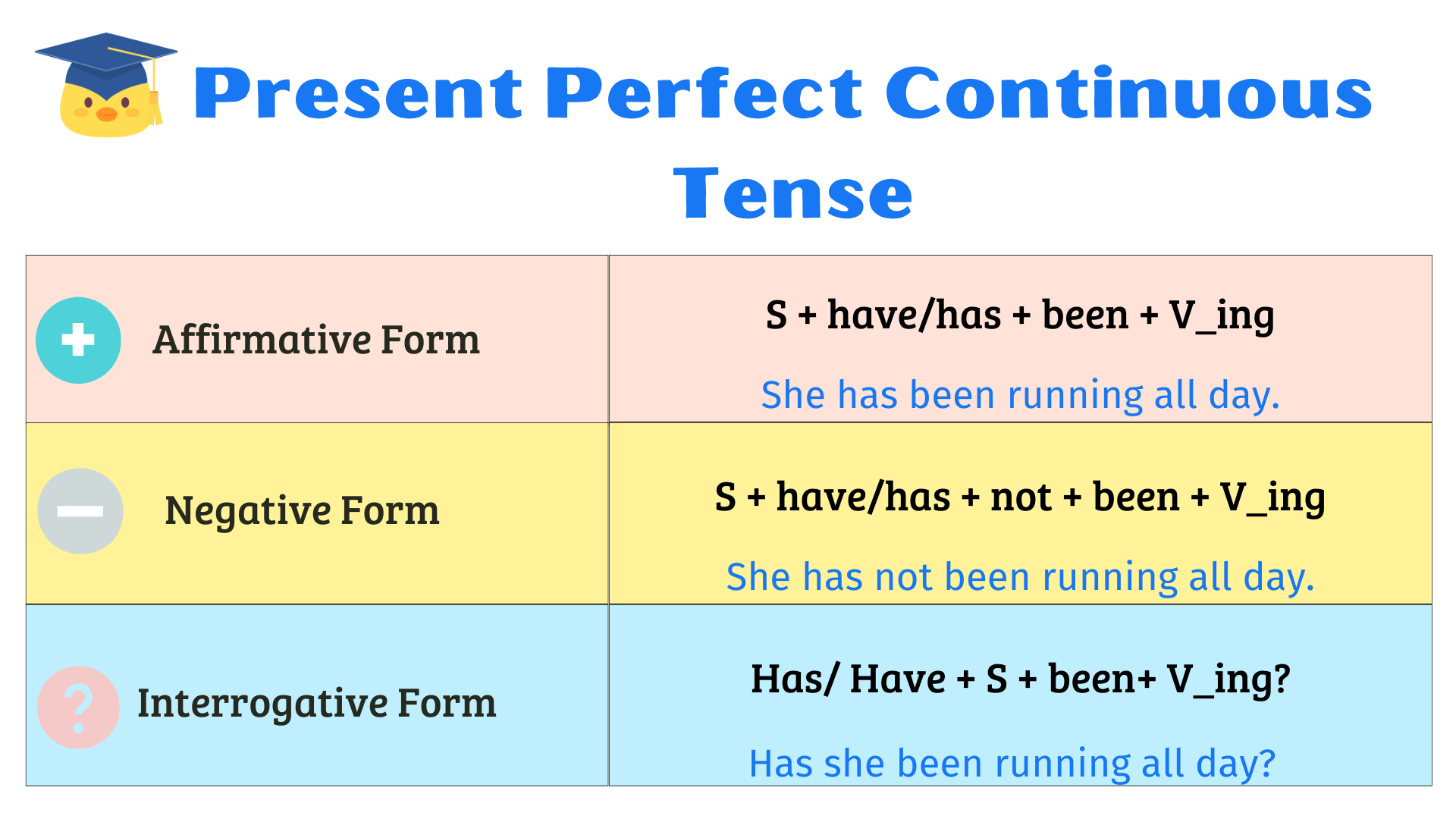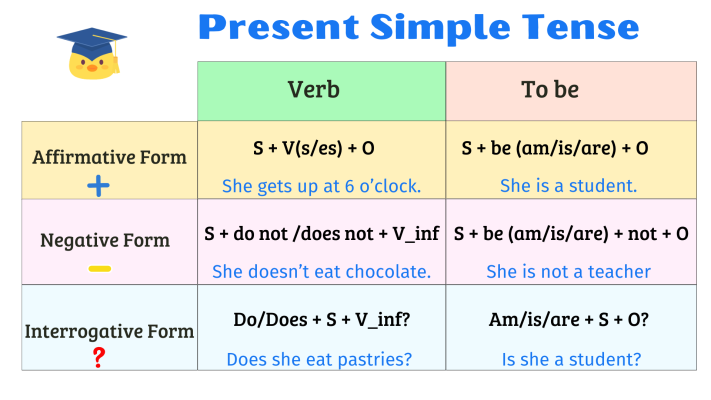Table of Contents
1. Understanding Present Perfect Continuous Tense
The Present Perfect Continuous Tense is a grammatical tense used to describe actions or events that started in the past and have continued up to the present moment, or have just stopped recently. It emphasizes the duration or ongoing nature of an action or event that has relevance to the present.
In English, the Present Perfect Continuous Tense is formed by using the present tense of the auxiliary verb “have” (have/has) followed by “been,” the present participle form of the main verb (verb + “-ing”), and the object of the sentence.
For example:
– “I have been working on this project for two hours.” (The action of working started in the past and has continued up to the present moment.)
– “She has been studying English for five years.” (The action of studying English started in the past and is ongoing.)
– “They have been waiting for the bus since morning.” (The action of waiting started in the past and is still continuing.)
The Present Perfect Continuous Tense emphasizes the duration or process of an action or event rather than just the completion of the action. It is often used to describe temporary actions, ongoing activities, or situations that have a connection to the present moment.
2. Forming Present Continuous Tense
The three forms of the Present Perfect Continuous Tense are used to construct sentences in different ways to convey actions or events that started in the past and have continued up to the present moment or have just stopped recently.
Here’s what each form means:

2.1 Affirmative (+):
The affirmative form of the Present Perfect Continuous Tense is used to state that an action or event has been ongoing or in progress. It is formed using the present tense of the auxiliary verb “have” (have/has) followed by “been,” the present participle form of the main verb (verb + “-ing”), and the object of the sentence. For example:
– “I have been working on this project for two hours.” (Affirmative statement indicating ongoing action.)
– “She has been studying English for five years.” (Affirmative statement indicating ongoing action.)
– “They have been waiting for the bus since morning.” (Affirmative statement indicating ongoing action.)
2.2 Negative (-):
The negative form of the Present Perfect Continuous Tense is used to state that an action or event has not been ongoing or in progress. It is formed by adding “not” after the present tense of the auxiliary verb “have” (have/has).
For example:
– “I have not been working on this project for two hours.” (Negative statement indicating that the ongoing action has not been happening.)
– “She has not been studying English for five years.” (Negative statement indicating that the ongoing action has not been happening.)
– “They have not been waiting for the bus since morning.” (Negative statement indicating that the ongoing action has not been happening.)
2.3 Interrogative (?):
The interrogative form of the Present Perfect Continuous Tense is used to ask questions about actions or events that have been ongoing or in progress. It is formed by inverting the present tense of the auxiliary verb “have” (have/has) with the subject.
For example:
– “Have I been working on this project for two hours?” (Interrogative question asking about ongoing action.)
– “Has she been studying English for five years?” (Interrogative question asking about ongoing action.)
– “Have they been waiting for the bus since morning?” (Interrogative question asking about ongoing action.)
In summary, the affirmative form states ongoing actions or events, the negative form negates ongoing actions or events, and the interrogative form asks questions about ongoing actions or events in the Present Perfect Continuous Tense.
3. Recognizing signal words for the Present Perfect Continuous Tense
To recognize the Present Perfect Continuous Tense in English sentences, you can look for several key indicators:
- Use of “have been” or “has been“: The presence of the auxiliary verbs “have been” (for first-person singular, second-person singular, and plural subjects) or “has been” (for third-person singular subject) is a clear sign of the Present Perfect Continuous Tense.
For example:
– “I have been working on this project for two hours.”
– “She has been studying English for five years.”
- “Been” + Present Participle Form of the Verb: The main verb in the Present Perfect Continuous Tense is in the present participle form (verb + “-ing”) and is preceded by “been.” This structure indicates that the action or event has been ongoing or in progress.
For example:
– “We have been waiting for the bus since morning.”
– “They have been playing soccer all afternoon.”
- Duration or Time Frame: Sentences in the Present Perfect Continuous Tense often include time expressions that indicate the duration or time frame of the ongoing action or event. These expressions include “for,” which indicates the duration, and “since,” which indicates the starting point of the action or event.
For example:
– “She has been studying English for five years.” (Duration)
– “We have been waiting for the bus since morning.” (Starting point)
- Emphasis on Ongoing Action: The Present Perfect Continuous Tense emphasizes the ongoing nature of an action or event, implying that it started in the past and has continued up to the present moment or has just stopped recently. Sentences in this tense often convey a sense of continuity or duration.
For example:
– “I have been reading this book all day.”
– “He has been working out at the gym for an hour.”
By paying attention to these indicators and contextual clues, you can easily recognize when the Present Perfect Continuous Tense is being used in English sentences.
Learn more:
- Present Simple Tense
- Present Continuous Tense
- Present Perfect Tense
- Present Perfect Continuous Tense
Past Tense
- Simple Past Tense
- Past Continuous Tense
- Past Perfect Tense
- Past Perfect Continuous Tense
Future Tense
-
- Simple Future Tense
- Future Continuous Tense
- Future Perfect Tense
- Future Perfect Continuous Tense



